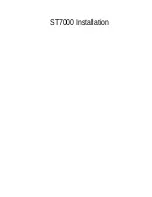
1 3
12. SPEAKER OUTPUTS
Feature: Connect 3 sets of studio monitors or 2 sets and a subwoofer.
Benefit: Every studio should have at least two points of reference. Not all switchers are equal! The
achieves this effortlessly,
without dropouts or phase shift. Remember... every decision you make while tracking and mixing is affected by your
monitor management system. That and the D/A are your only pieces of gear that are ALWAYS on.
Operation: See
sections
7 & 8
for operation.
13. HEADPHONES OUTPUTS
Feature: Two independent source driven, powerful headphone amplifiers on the rear as well as the front.
Benefit: Select what to audition (one from the headphone selector and one from the control room selector). The talent and producer
may enjoy different source material. For example, the artist listens to the
usb
input while producer toggles between
usb
and
the rough track via bluetooth (feeling the performance inspiration). Potent amplifiers provide light years of headroom to
hear intelligibly while promoting intelligent decisions and driving the most inspired performances. Separate volume knobs
and sources will accommodate different user tastes, fulfilling the performer and producer’s needs while satisfy varying
headphone impedances. Please exhibit caution when selecting a level. You don’t get a second chance with blown hearing.
Operation: See the
headphone
jacks
and
level
control
knobs
section for details.
Note:
Here, the rear these jacks are multed in parallel from the front for wiring to a vocal booth or live room wall plate. They
can drive into 4-ohm loads, therefore you can use up to 8 pairs of headphones on each amp. (Assuming, that you are
using typical dynamic headphones that are each 32 ohms or higher.)
“The D-BOX+ is a significant upgrade over the time
tested original. Engineers will be extremely pleased
with the new monitoring and cue section features. I
am getting great image and depth in my mixes from
the summing and the D/A is fantastic. The D-BOX+
has taken a quantum leap forward. ”
MIKE PICOTTE
Mixer, Engineer
10. SUMMING OUT
Feature: This is the stereo output of the 8 summed inputs.
Benefit: Hear your mix BEFORE it hits external processing or the A/D converter while returning back into your interface and DAW.
Switch between sources before and after effortlessly.
Note:
summing
out
is always live. In other words, if signal is present at the
summing
input
(green LEDs flashing), there will be
audio from the
summing
out
unless the
sum
trim
knob is fully counterclockwise at -
∞
dBu.
Note: The
sum
trim
knob has a swing of -
∞
dBu completely counterclockwise and unity when fully clockwise.
11. LINE OUT
Feature: This is the stereo output of the sources selected from either the
headphone
or
control
room
section. (User selectable.)
Benefit: Send this output anywhere: to another headphone amp for expansinon or to the live room, so the talent can switch between
what sources they hear. Expand your monitor compliment by adding another monitor controller or hit a different A/D
converter for character comparisons. Even send it to your video camera for the audio capture... get creative.
Tip:
,
Use the
line
out
as a dub output. In other words, combine up to
5
inputs simultaneously-
analog
,
sum
,
bluetooth
,
usb
and
aes
/
spdif
. For a total of 16 inputs- that is slick, right?
Operation: Refer to
sections
4 & 5
.
1














































